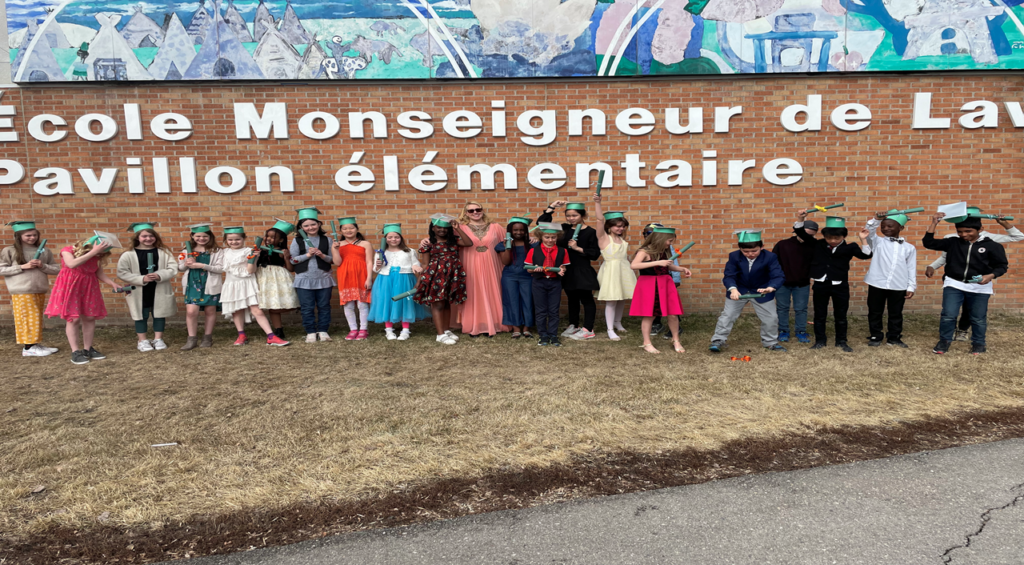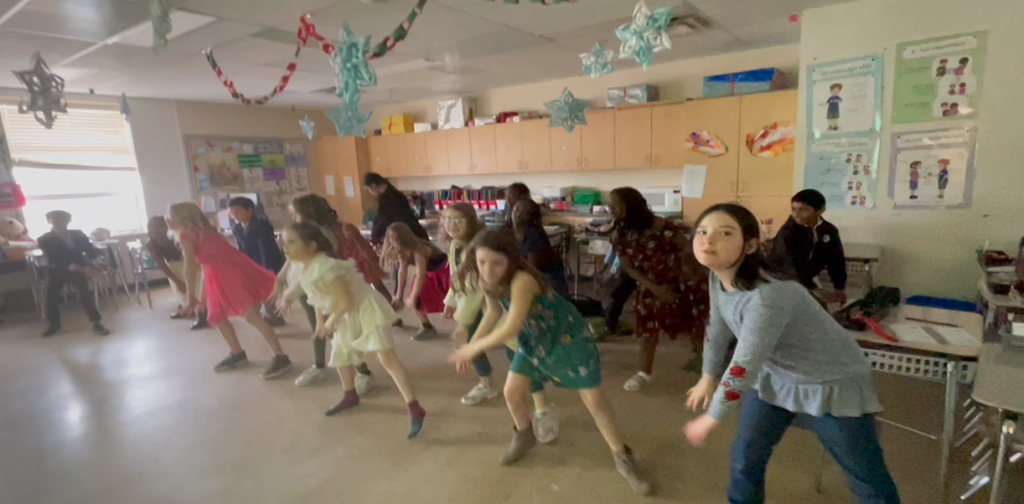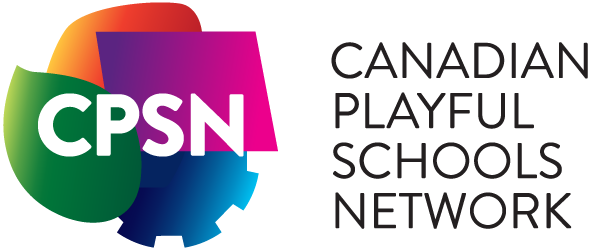**Article originally published in French.**
It all started with a request from the students to perform…
École Monseigneur de Laval is the second French-language school to open in Saskatchewan, and is located in Regina. The school “fosters the development of students’ Francophone identity through enriched programming and the commitment of parents, families and the entire Fransaskois community to academic success” (school website). And this reality is clearly visible in educational projects where playfulness is an integral part of the pedagogy. This adventure in integrating playfulness into learning was in response to the students’ demand for theater, and the teaching team responded by pooling everyone’s knowledge, skills and experience. Using drama and role-playing, and with the theme of the time machine as a starting point, the various projects fostered motivation, fun, play and discovery, while focusing on the students’ interests.

The teachers of third, fourth, fifth, and sixth grades were kind enough to share with us the “labyrinth project” with Fransaskois cultural referents included in all the educational and playful projects of the elementary pavilion’s pedagogical team. These teachers not only received support from their principals, but also from parents and members of the francophone community. The students at the heart of the projects played a very active and central role, as we shall discover.
Mme Élodie Louise,3rd grade teacher, had the Fransaskois flag as her theme. This project took place in nine stages: need a flag, organize a contest, publicize the contest, design the flag, choose the winning flag, reveal the flag, steal the flag, raise the flag and the Saskatchewan government.
With Ms. Stéphanie Pain,4th grade teacher, the students visited the cathedral in Gravelbourg, a city dear to the hearts of Franco-Fransaskois and Fransaskoises, with a French-speaking guide. Games were organized around this historic building. In the depths of winter, the students also visited the Legislative Assembly. The meeting with David Bouchard allowed students to discover and learn more about the Métis of Saskatchewan.

In the other4th grade class, teacher Ms. Samira Moussalim, assisted by her intern Ms. Ambre, put all their energy into setting up fun activities: role-playing and dramatization. The students took on the role of legal science students. They worked on the history of French trials in Saskatchewan, with different characters, including Louis Riel and Père Mercure. To make the experience more authentic, Mr. Dana Brûlé, the King’s Attorney General, accepted the students’ invitation, and discussions revolved around children’s rights and language laws in Saskatchewan. This provided an opportunity to discuss the role and responsibility of government in Saskatchewan and the status of the French language. A visit to the Supreme Court in Regina was even scheduled, and this project enabled the students to discover the professions and functions performed in the legal field.
For the dramatized part of the project, which highlighted the theme of cultural diversity, the graduation party organized after the fictitious graduation ceremony featured two imaginary families from different cultures and traditions, whose common ground was the French language. For this part of the project, Anne, a student mom, joined the teaching team to “play” the role of one of the moms from the two families, while the other was played by Samira. Secrets” were exchanged about the parents’ culture. This project integrates cultural aspects, linked to music, culinary, dress and social traditions, etc., and required the creation of the story script, followed by its interpretation. Students played a variety of roles, from narrating the story, to DJing the dance party, to acting as the moms’ kids. So everyone played a part, and everyone contributed to the show, whether through the creation of sets, costumes, props or the choice of music to accompany the play. For example, during a visit to the town of Willow Bunch, the students met a family of French-speaking musical artists: the Campagne family, from whom the students borrowed the music used as soundtrack and accompaniment at the party following the graduation ceremony. At the promotion party, everyone ate and danced. The video made to immortalize the students’ achievement reflects their pleasure and commitment.
The involvement of the Association des juristes d’expression française de la Saskatchewan, as well as that of Francophone artists and parents in this educational project, also demonstrates the strong commitment of the Francophone community.

In5th grade, Kouamé Nzian’s class visited the site of the Battle of Batoche, which took place between May 9 and 12, 1885, and studied the related history. This was the site of the last great confrontation of the Northwest Resistance, with Louis Riel, the Métis – including Gabriel Dumont – and First Nations allies, against government troops. The students also prepared and recorded an interview with Laurier Gareau, a French-speaking author, playwright, director, actor and historian whose work reveals a strong complicity with the Métis.
The 6th graders, with their teacher Mrs. Hind Rami, chose the theme of the Beaupré Giant. They studied the novel of the same name and then created a timeline, highlighting important events in his life. They created a playlet whose initial idea was to travel through history using a time machine. For this project, the students were given the tasks of authors, as well as roles as actors, journalists, documentalists, designers, set designers, costume designers and so on. This project, for which the students were given carte blanche, required their commitment and collaboration to create the time machine and a new language too. For the costumes, community involvement was important, with the Association Canadienne Française de Regina generously providing the costumes. This project, in which the students learned a great deal and demonstrated their creativity, inspired them to create a museum dedicated to the Beaupré Giant.
Gravelbour, Saskatchewan’s bilingual “cultural jewel”, gave students a first-hand look at the vitality of the French language at three French-language educational institutions, most notably Collège Mathieu, Saskatchewan’s only French-language post-secondary technical and vocational college, founded in 1918.
Everyone involved in these exciting projects is looking forward to seeing them come to fruition at the end of the school year, and to sharing them with other students in the school, the community and members of the network.
